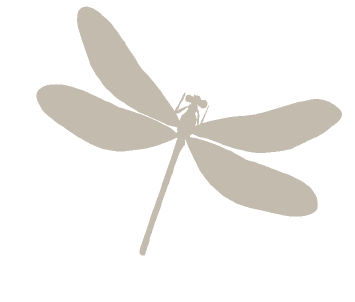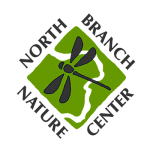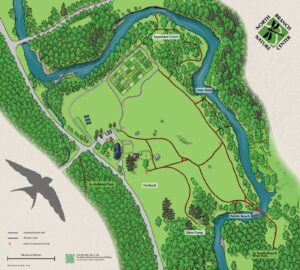Experiencing Nature with Your Senses

Welcome! We invite you to tune in to what you see, hear, feel, smell, and even taste, as you follow this trail and learn about the waters, ecosystems, and inhabitants of this land, past and present. Thank you for joining us!
Curious About Names?
By design, the Nature Connection Trail doesn't focus on identifying species. To learn more about the plants and animals you encounter here, use the resources linked on each sign or borrow a field guide from us.
Accessibility
The trail's total distance is 0.6 miles and there are several benches along the way. The first three signs are along the Universal Access Trail. The remaining five signs are along our main loop trail, with grass and dirt surfaces and a maximum grade of 9%.
This trail is designed to help focus your senses if any of the prompts don't line up with your abilities, consider adapting them to suit you.
Translations and audio recordings are available using the QR codes.
The Traditional Stewards of This Land
NBNC resides upon the traditional and unceded home of the Western Abenaki People. We strive to respect and honor their legacy, and to support the current Indigenous residents of Vermont. Each panel features paintings by Abenaki artist Amy Hook-Therrien and Abenaki words in purple, provided by Jesse and Joseph Bruchac, citizens and language keepers of the Nulhegan Band of the Coosuk Abenaki Nation. This trail invites us to allow ourselves to be present (chigitozida) and use our senses. You can explore the concept of chigitozida and learn more about Abenaki language at the glossary on this page.
Acknowledgements
We are grateful to: our Abenaki partners, Amy, Jesse, and Joseph; designer Linda Mirabile of RavenMark Studio; the Vermont Arts Council; and NBNC’s many supporters. Wliwni (thank you)! To join the NBNC community, please click here.

713 Elm Street
Montpelier, Vermont 05602
(802) 229-6206
Hours: Center Open Monday-Friday 9-4
Trails Open 24/7




